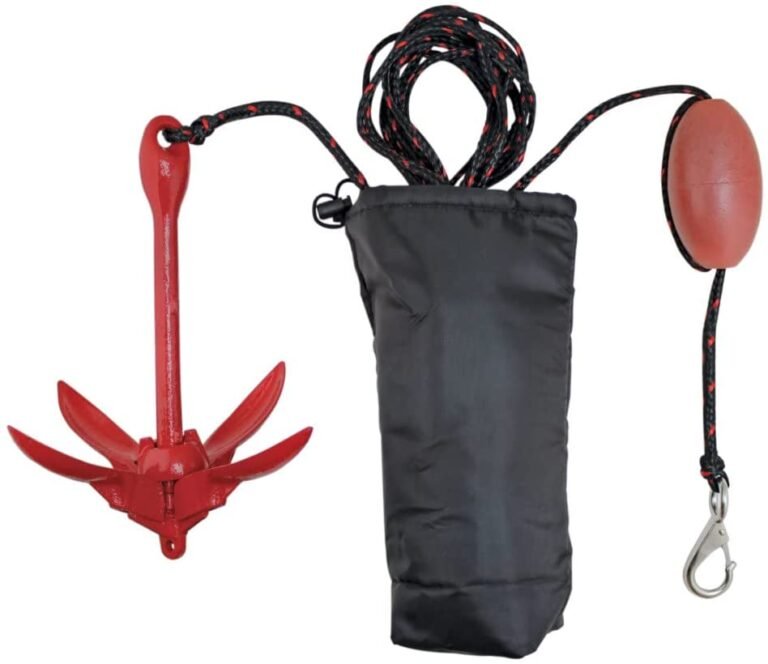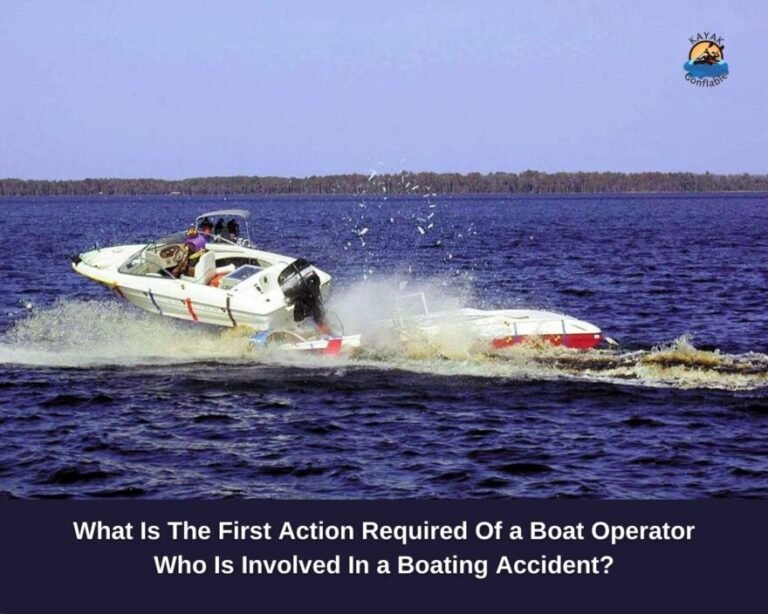While Boating, You See a Red Flag With a White Diagonal Stripe, What Does This Flag Mean?

What Is a Boating Flag?
Boating flags are a common sight on boats. A flag is typically a piece of cloth with a distinctive design that is flown from a pole on the bow or mast of a boat to indicate the nationality of the vessel or to signal any other special circumstances.
Boating flags come in all shapes and sizes, and there is no one standard design. They can be made from a variety of materials including cloth, metal, and plastic. There are many different types of flags, such as national flags, maritime flags, and recreational flags.
Uses Of Boating Flags
Flags are an integral part of boating. They have myriad uses on the water and at the port. Flags are used for:
- Signaling to other boats.
- Identifying a vessel’s nationality.
- Passing warnings across.
- Indicating the type of watercraft.
- Indicating a vessel’s name, location, direction, and speed.
- Directing traffic on the water.
- Signaling affiliation or allegiance to an organization.
- Marking territorial claims.
- Indicating the name of a port or harbor.
- Decorative purposes.
Importance Of Boating Flags
Boating flags are a very important safety tool when boating. Flags can be used to indicate certain warnings or instructions to other boats nearby. They can indicate the nationality of the boat, the type of boat, the owner’s name, and the vessel’s registration number.
Flags also help sailors identify one another and determine their position on the water. When in use, flags should be flown at the stern of the boat, as close to the water as possible. By flying flags properly, boaters can help keep each other safe while enjoying their shared waterways.
What Does The Red Flag With A White Diagonal Stripe Mean?
When on the water, boaters see a lot of interesting things. One such thing could be a red flag with a white diagonal stripe. The flag could be attached to a vessel or buoy, and you might find yourself wondering what to do.
The key thing to note is that any such flag denotes diving activity. It is a sign warning others on the water that divers are using the water for their sport and need their space to prevent any mishaps. The flag can also indicate the presence of snorkelers.
What Should You Do When You See This Flag?
If you see a flag signaling diving activity on the water, you should assume that there is a dive team present and proceed with caution. Dive teams are often in close quarters and may not appreciate outsiders interfering with their activities.
It is crucial to be aware of your surroundings and stay at least 150 feet away from the flag. Divers must stay within 150 feet from their flag so staying out of reach will protect you and the diver as the chances of accidents are greatly reduced.
It is also important to note that divers could be working in dangerous conditions (such as exploring dangerous marine life like sharks) and could injure or even kill you if they are not careful.
If you are curious about what is going on, watch from afar. It is also a good idea to keep your distance from other watercraft in the vicinity.
Notifying the authorities of your findings is a good course of action. Divers may not have any means of communication if they become lost underwater and could drown.
So, alerting the authorities of their activity would ensure they are watched and rescued if need be. Should you see someone in distress, do not hesitate to call for help.
If you are kayaking or canoeing and witness a diver in difficulty, do not approach them; contact authorities immediately. Remember that the diving region could be dangerous, so keep away and be safe on the water.
Different Boating Flags And Their Meanings
In the world of sailing, a flag can mean a lot. For example, when you are sailing in international waters and you see another vessel fly their country’s flag, they are probably requesting permission to pass.
Since ancient times, people have been using flags to identify their countries, ships, and businesses. Flags are made from a variety of materials, including cloth, paper, and plastic.
They are flown from poles or attached to a flagpole to indicate the presence of a nation or ship in the area. There are many different types of flags, and each has its unique meaning. In this section, we explore some flag types and their meanings.
International Maritime Signal Flag
The international maritime signal flag is a set of flags used to communicate maritime warnings, requests for assistance, and other notices between ships and shore.
The flag is composed of two fields, the upper representing the warning or information to be conveyed, and the lower black field representing the standby signal.
For a flag to be considered an official maritime signal flag, it must be registered with the International Maritime Organization (IMO).
Distress Flag
In the event of distress, a distress flag should be flown from any vessel. The colors of the flag indicate the nature of the emergency: a white flag indicates a warning or request for help.
A red flag indicates an emergency requiring immediate assistance, and a green flag indicates that all is safe and well. The meaning of each color can be found in the International Code of Signals.
Ensign Flag
The ensign flag is a rectangular piece of cloth with a union jack in the upper left-hand corner and the country’s name or flag in the lower right-hand corner.
The ensign flag is often the flag of the country to whose navy the vessel belongs, but it can also be the flag of a multinational organization such as the United Nations.
It is flown from the mast of a ship when the ship is at sea. The ensign is used to identify the nationality of a ship, and can also be used as a rallying point for sailors.
The ensign may also be flown from a staff or pole to indicate that a building or other structure is under government jurisdiction.
Romeo Flag
The Romeo flag is a red flag with a yellow cross on it. When you see a ship flying the Romeo flag, it means that they have received your signal and are willing to help you out.
The Romeo flag also signifies that the ship is equipped with necessary supplies and services for sea travelers.
Alpha Flag
Alpha Flags play practically the same role as dive flags. They must be shown on vessels whenever the diving operation limits the ability of these watercraft to navigate.
Alpha Flags indicate that the diver is operating in a restricted area and should not be approached.
The flag should be flown continuously while diving, even when the vessel is only partially submerged, to help prevent collisions with other vessels or objects while in water.
When operating within a restricted area, always have an expert on board to provide guidance.
Bravo Flag
When flying the Bravo Flag, you are indicating that you are taking in, discharging, or carrying dangerous goods.
The colors of the flag indicate the type of cargo: red for dangerous goods and white for general cargo. Flying the Bravo Flag during marine transportation is a sign of safety and trust.
Papa Flag
The Papa Flag is a maritime signal flag that indicates that all persons should report on board. The flag is typically flown from the mast of a vessel when underway to warn other vessels of the presence of hazardous shipping conditions, such as impaired visibility or heavy traffic.
Echo Flag
The Echo Flag is a signal used to communicate the desire to alter one’s course to starboard (to the right when facing forward) on the water. The flag is flown when the captain decides that the ship needs to change direction to avoid danger.
When raising an echo flag, the ship’s captain or commanding officer indicates to any other vessels within the range that they should alter their course as well especially if they are close to the vessel.
The flag is flown from the peak of the mizzenmast at a height of about two feet. Although the flag typically indicates a course change, it can also be flown when a ship needs to avoid another vessel.
It is usually used when traveling in dense fog and other hazardous conditions, where the captain may not be able to see the shoreline.
Always be aware of the flags being flown on the boats and objects around you and what they mean; they may convey information regarding safety or request assistance.
Remember that the red flag with a white diagonal stripe means divers are at work in the vicinity so you should stay out of the area to avoid collisions.
It implies that the vessel ahead is restricted in its ability to maneuver so avoiding an accident is up to you. Keep in mind that dangerous marine life might also be in these waters so be careful.
Be cautious when approaching or passing other boats, and always follow the instructions of the boat’s captain. Call for aid if you notice dangerous activity and be safe on the water.






